2019-06-20 - Nº 216
Editorial
Esta é a Newsletter Nº 216 que se apresenta com o mesmo formato que as anteriores. Se gostar da Newsletter partilhe-a!
Todas as Newsletters encontram-se indexadas no link.
Esta Newsletter tem os seguintes tópicos:
Faz hoje anos que nascia, em 1860, Alexander Winton. Este americano nascido na Escócia, fabricante de automóveis colocou milhares de "Winton Sixes" na estrada. Tendo começado como um fabricante de bicicletas no West Side de Cleveland, Winton tornou-se designer e construtor de automóveis de alta qualidade. Ele produziu a sua primeira carruagem sem cavalos em 1896. O legado de Winton inclui mais de 100 patentes instrumentais nos primeiros projectos de automóveis e motores a diesel. Ele também foi generoso ao passar a tecnologia para os concorrentes quando a segurança era um problema.
Nesta semana que passou ficámos a saber que o satélite de navegação Glonass-M irá iniciar a sua operação brevemente. O satélite de navegação russo Glonass-M, lançado em órbita no final de maio, entrará em operação em 22 de Junho, informou o centro de informações GLONASS nesta quarta-feira, acrescentando que um dispositivo anterior foi transferido para uma reserva orbital.
Na Newsletter desta semana apresentamos diversos projetos de maker assim como um conjunto de modelos 3D desenhados com o OpenSCAD. É apresentada a revista Hackspace Magazine nº20 de Junho.
 João Alves ([email protected])
João Alves ([email protected])
O conteúdo da Newsletter encontra-se sob a licença  Creative Commons Attribution-NonCommercial-ShareAlike 4.0 International License.
Creative Commons Attribution-NonCommercial-ShareAlike 4.0 International License.
Novidades da Semana

Cutting Edge Russian Glonass-M Navigation Satellite to Begin Operation Soon - Statement
"The Russian Glonass-M navigation satellite launched into orbit in late May will go into operation on 22 June, the GLONASS information centre said Wednesday, adding that a previous device has been transferred to an orbital reserve. "According to GLONASS System Control Centre, the Glonass-M 758 (orbital slot 12) is set to enter the orbital constellation on 22 June 2019", the centre said in a statement. The Glonass-M 758 satellite will replace Glonass-M satellite 723, which has exceeded its expected service life by some 50 percent. The Glonass constellation comprises 27 satellites, including Glonass-M and Glonass-K vehicles. The satellites circle the Earth at an altitude of about 11,000 miles and ensure complete coverage of the surface and global signal availability. Next-generation Glonass-K and Glonass-K2 satellites transmit more navigation signals and have a longer design life - up to 10 years - in comparison with Glonass-M devices." [...]
Outras Notícias

Vera’s first assignment: Volvo Trucks presents an autonomous transport between a logistics centre and port
"Volvo Trucks’ electric, connected and autonomous vehicle Vera will form part of an integrated solution to transport goods from a logistics centre to a port terminal in Gothenburg, Sweden. The assignment is a result of a new collaboration between Volvo Trucks and the ferry and logistics company, DFDS. The purpose of the collaboration is to implement Vera in a real application, enabling a connected system for a continuous flow of goods, from a DFDS’ logistics centre to an APM Terminals port facility in Gothenburg, for distribution across the world. In 2018, Volvo Trucks presented its first electric, connected and autonomous solution, designed for repetitive assignments in logistics centres, factories and ports. Vera is suited for short distances, transporting large volumes of goods with high precision. “Now we have the opportunity to implement Vera in an ideal setting and further develop her potential for other similar operations,” says Mikael Karlsson, Vice President Autonomous Solutions at Volvo Trucks." [...]

NVIDIA Builds Supercomputer to Develop Self-Driving Cars
"In a clear demonstration of why AI leadership demands the best compute capabilities, NVIDIA today unveiled the world’s 22nd fastest supercomputer — DGX SuperPOD — which provides AI infrastructure that meets the massive demands of the company’s autonomous-vehicle deployment program. The system was built in just three weeks with 96 NVIDIA DGX-2H supercomputers and Mellanox interconnect technology. Delivering 9.4 petaflops of processing capability, it has the muscle for training the vast number of deep neural networks required for safe self-driving vehicles. Customers can buy this system in whole or in part from any DGX-2 partner based on our DGX SuperPOD design. AI training of self-driving cars is the ultimate compute-intensive challenge. A single data-collection vehicle generates 1 terabyte of data per hour." [...]

3D printing to be used in surgery to repair teenager's shattered skull after Cape Byron cliff accident
"A teenager who shattered his skull falling from a cliff at Cape Byron in northern New South Wales will undergo surgery to have a piece of 3D printing fitted to his damaged skull. Fifteen-year-old Connor Meldrum will undergo the surgery at the Mater Hospital in Brisbane this week. The custom-printed section of skull is made of a high-density porous polyethylene material that mimics the properties of living bone. Mater Hospital neurosurgeon Rob Campbell said the technology was world class. "It mimics natural bone with its elastic capability and strength, allowing tissue to grow in and incorporate the implant to the skull," Dr Campbell said. The technology has been developed by a Melbourne-based biomedical company and commercialised in the past year with the help a Federal Government grant." [...]
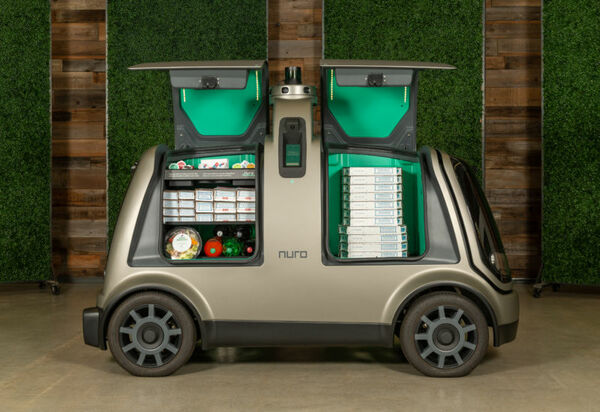
Domino's and Nuro Partner to Bring Autonomous Pizza Delivery to Houston
"Domino's Pizza (NYSE: DPZ), the largest pizza company in the world based on global retail sales, and Nuro, the robotics company transforming local commerce, are partnering on autonomous pizza delivery using the custom unmanned vehicle known as the R2 later this year. The global leader in pizza delivery will use Nuro's unmanned fleet to serve select Houston Domino's customers who place orders online. This partnership will expand Nuro's autonomous delivery operations, which have safely and successfully been running in the Houston metro area since March 2019. "We are always looking for new ways to innovate and evolve the delivery experience for our customers," said Kevin Vasconi, Domino's executive vice president and chief information officer. "Nuro's vehicles are specially designed to optimize the food delivery experience, which makes them a valuable partner in our autonomous vehicle journey. The opportunity to bring our customers the choice of an unmanned delivery experience, and our operators an additional delivery solution during a busy store rush, is an important part of our autonomous vehicle testing."" [...]
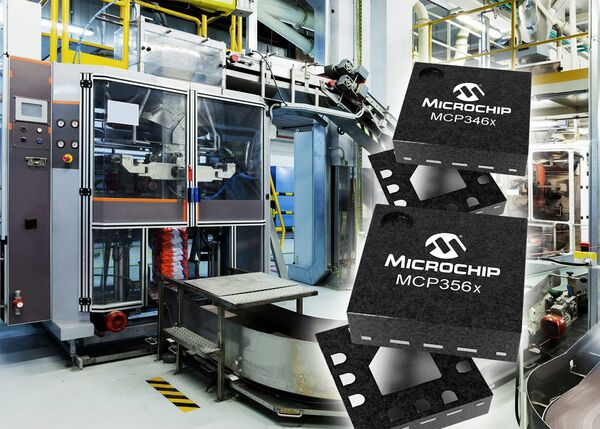
Fast Data Rates Meet High Accuracy in Microchip’s New Analog-to-Digital Converter Families
"With data rates of up to 153.6 kSPS and a compact package size, the 24-bit and 16-bit ADCs improve system performance in high precision applications. The rapidly growing market of high precision applications requires Analog-to-Digital Converters (ADCs) with faster programmable data rates, higher accuracy and more integrated features to maximize system performance. To meet these needs, Microchip Technology Inc. (Nasdaq: MCHP) today introduced a family of compact ADCs that offer high programmable data rates of up to 153.6 kilosamples per second (kSPS). The 24-bit MCP356x and 16-bit MCP346x delta-sigma ADC families offer faster programmable data rates over similar devices on the market while providing high accuracy and lower noise performance. Available in a tiny 3 mm x 3 mm UQFN-20 package, these highly integrated ADCs meet increasing demand for small packaging in space-constrained applications such as portable instrumentation devices. Most high-resolution delta-sigma ADCs on the market have slower programmable data rates of a few kSPS." [...]
Ciência e Tecnologia

Better thermoelectric materials thanks to ligand mediation
"Investigators from the ICN2 Advanced Electron Nanoscopy Group have collaborated in an international research to show that inorganic ligands can be used to improve the performance as a thermoelectric material of SnTe-CdSe nanocomposites. The efficiency obtained with this procedure is the highest reported for this material and was highlighted in the front cover of JACS. Everybody knows that electrical devices get hot. However, the other way around is also possible: the search for thermoelectric materials, able to efficiently convert heat into electricity, has been a longstanding challenge. A material’s thermoelectric performance is usually evaluated through a coefficient called figure of merit (ZT). The best thermoelectric materials known so far have reached a ZT just above 1." [...]
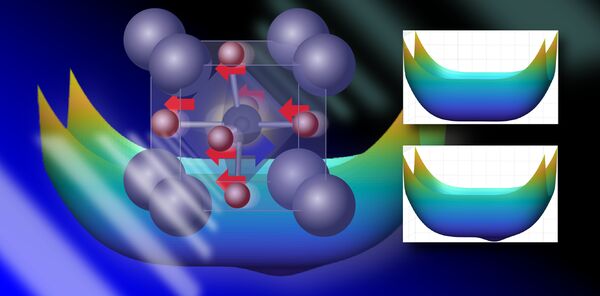
Revealing ‘hidden’ phases of matter through the power of light
"New research shows how materials can be imbued with new chemical properties using a solid phase transition method that relies on extremely fast pulses of light. Most people think of water as existing in only one of three phases: solid ice, liquid water, or gas vapor. But matter can exist in many different phases—ice, for example, has more than ten known phases, or ways that its atoms can be spatially arranged. The widespread use of piezoelectric materials, such as microphones and ultrasound, is possible thanks to a fundamental understanding of how an external force, like pressure, temperature, or electricity, can lead to phase transitions that imbue materials with new properties. A new study finds that a metal oxide has a “hidden” phase, one that gives the material new, ferroelectric properties, the ability to separate positive and negative charges, when it is activated by extremely fast pulses of light. The research was led by MIT researchers Keith A. Nelson, Xian Li, and Edoardo Baldini, in collaboration with Andrew M. Rappe and graduate students Tian Qiu and Jiahao Zhang." [...]
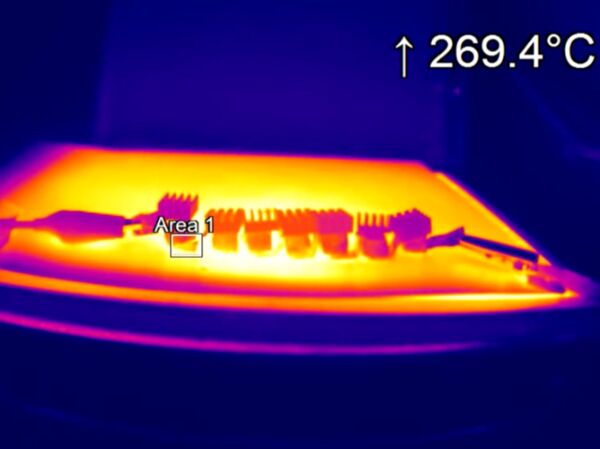
Turning waste heat into electrical power: 3D printed device could help cut energy bills and carbon
"A new 3-D printed thermoelectric device, which converts heat into electric power with an efficiency factor over 50% higher than the previous best for printed materials - and is cheap to produce in bulk - has been manufactured by researchers at Swansea University’s SPECIFIC Innovation and Knowledge Centre. Around one-sixth of all the energy used by industry in the UK currently ends up as waste heat, emitted into the atmosphere. Harnessing this to create electricity could be a huge step forward in helping industry cut its energy bills and reduce its carbon footprint. Thermoelectric materials turn differences in temperature into electric power, or vice versa. They are used in fridges, power plants and even some smart watches that are powered by body heat. Previous research has shown that a material called tin selenide (SnSe), a compound made up of tin (Sn) and selenium (Se), has high potential as a thermoelectric material." [...]
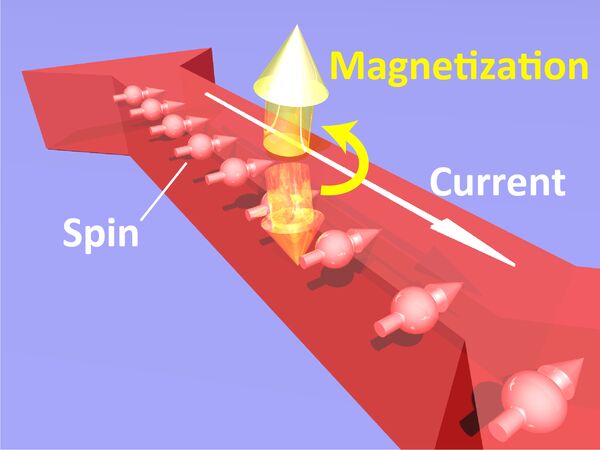
Small currents for big gains in spintronics
"A new low-power magnetic switching component could aid spintronic devices UTokyo researchers have created an electronic component that demonstrates functions and abilities important to future generations of computational logic and memory devices. It is between one and two orders of magnitude more power efficient than previous attempts to create a component with the same kind of behavior. This fact could help it realize developments in the emerging field of spintronics. If you’re a keen technophile and like to keep up to date with current and future developments in the field of computing, you might have come across the emerging field of spintronic devices. In a nutshell, spintronics explores the possibility of high-performance, low-power components for logic and memory. It’s based around the idea of encoding information into the spin — a property related to angular momentum — of an electron, rather than by using packets of electrons to represent logical bits, 1s and 0s." [...]
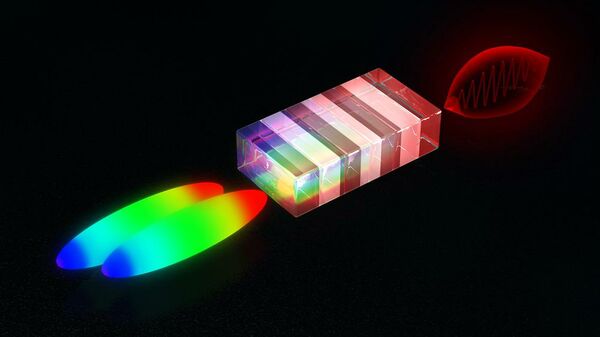
Laser trick produces high-energy terahertz pulses
"Milestone for compact particle accelerators. A team of scientists from DESY and the University of Hamburg has achieved an important milestone in the quest for a new type of compact particle accelerator. Using ultra-powerful pulses of laser light, they were able to produce particularly high-energy flashes of radiation in the terahertz range having a sharply defined wavelength (colour). Terahertz radiation is to open the way for a new generation of compact particle accelerators that will find room on a lab bench. The team headed by Andreas Maier and Franz Kärtner from the Hamburg Center for Free-Electron Laser Science (CFEL) is presenting its findings in the journal Nature Communications. CFEL is jointly run by DESY, the University of Hamburg and the Max Planck Society." [...]

New Quantum Dot Microscope Shows Electric Potentials of Individual Atoms
"A team of researchers from Jülich in cooperation with the University of Magdeburg has developed a new method to measure the electric potentials of a sample at atomic accuracy. Using conventional methods, it was virtually impossible until now to quantitatively record the electric potentials that occur in the immediate vicinity of individual molecules or atoms. The new scanning quantum dot microscopy method, which was recently presented in the journal Nature Materials by scientists from Forschungszentrum Jülich together with partners from two other institutions, could open up new opportunities for chip manufacture or the characterization of biomolecules such as DNA. The positive atomic nuclei and negative electrons of which all matter consists produce electric potential fields that superpose and compensate each other, even over very short distances. Conventional methods do not permit quantitative measurements of these small-area fields, which are responsible for many material properties and functions on the nanoscale. Almost all established methods capable of imaging such potentials are based on the measurement of forces that are caused by electric charges." [...]

Teaching artificial intelligence to connect senses like vision and touch
"MIT CSAIL system can learn to see by touching and feel by seeing, suggesting future where robots can more easily grasp and recognize objects. In Canadian author Margaret Atwood’s book "Blind Assassins," she says that “touch comes before sight, before speech. It’s the first language and the last, and it always tells the truth.” While our sense of touch gives us a channel to feel the physical world, our eyes help us immediately understand the full picture of these tactile signals. Robots that have been programmed to see or feel can’t use these signals quite as interchangeably. To better bridge this sensory gap, researchers from MIT’s Computer Science and Artificial Intelligence Laboratory (CSAIL) have come up with a predictive artificial intelligence (AI) that can learn to see by touching, and learn to feel by seeing. The team’s system can create realistic tactile signals from visual inputs, and predict which object and what part is being touched directly from those tactile inputs." [...]
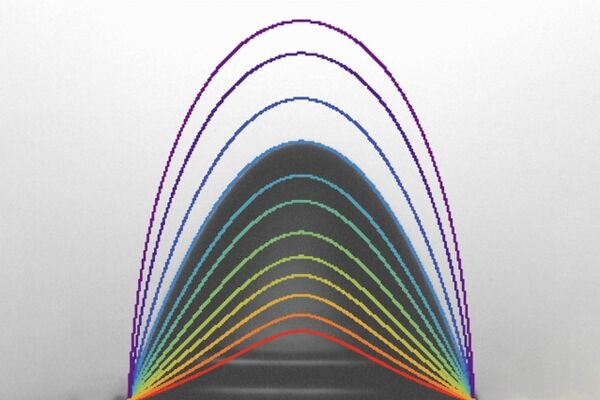
A droplet walks into an electric field …
"Researchers have found a simple formula that could be useful for air purification, space propulsion, and molecular analyses. When a raindrop falls through a thundercloud, it is subject to strong electric fields that pull and tug on the droplet, like a soap bubble in the wind. If the electric field is strong enough, it can cause the droplet to burst apart, creating a fine, electrified mist. Scientists began taking notice of how droplets behave in electric fields in the early 1900s, amid concerns over lightning strikes that were damaging newly erected power lines. They soon realized that the power lines’ own electric fields were causing raindrops to burst around them, providing a conductive path for lightning to strike. This revelation led engineers to design thicker coverings around power lines to limit lightning strikes." [...]

Vidgets: Modular Mechanical Widgets for Mobile Devices
"We present Vidgets, a family of mechanical widgets, specifically push buttons and rotary knobs that augment mobile devices with tangible user interfaces. When these widgets are attached to a mobile device and a user interacts with them, the widgets’ nonlinear mechanical response shifts the device slightly and quickly, and this subtle motion can be detected by the accelerometer commonly equipped on mobile devices. We propose a physics-based model to understand the nonlinear mechanical response of widgets. This understanding enables us to design tactile force profiles of these widgets so that the resulting accelerometer signals become easy to recognize. We then develop a lightweight signal processing algorithm that analyzes the accelerometer signals and recognizes how the user interacts with the widgets in real time. Vidgets widgets are low-cost, compact, reconfigurable, and power efficient." [...]

New material with magnetic shape memory
"Researchers at the Paul Scherrer Institute PSI and ETH Zurich have developed a new material whose shape memory is activated by magnetism. It retains a given shape when it is put into a magnetic field. It is a composite material consisting of two components. What is special about the new material is that, unlike previous shape-memory materials, it consists of a polymer and droplets of a so-called magnetorheological fluid embedded in it. Areas of application for this new type of composite material include medicine, aerospace, electronics and robotics. The researchers are now publishing their results in the scientific journal Advanced Materials." [...]
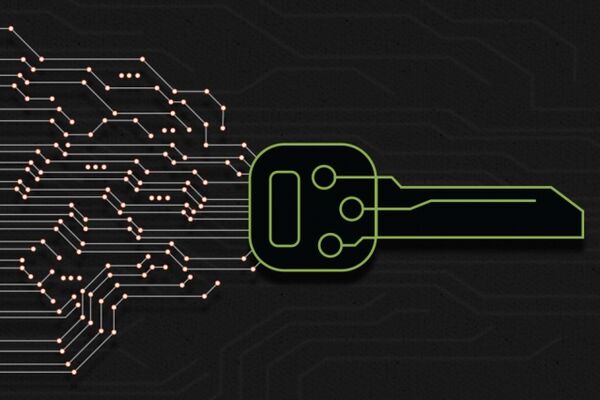
Automated cryptocode generator is helping secure the web
"System automatically writes optimized algorithms to encrypt data in Google Chrome browsers and web applications. Nearly every time you open up a secure Google Chrome browser, a new MIT-developed cryptographic system is helping better protect your data. In a paper presented at the recent IEEE Symposium on Security and Privacy, MIT researchers detail a system that, for the first time, automatically generates optimized cryptography code that’s usually written by hand. Deployed in early 2018, the system is now being widely used by Google and other tech firms. The paper now demonstrates for other researchers in the field how automated methods can be implemented to prevent human-made errors in generating cryptocode, and how key adjustments to components of the system can help achieve higher performance. To secure online communications, cryptographic protocols run complex mathematical algorithms that do some complex arithmetic on large numbers." [...]

Immortal quantum particles
"Decay is relentless in the macroscopic world: broken objects do not fit themselves back together again. However, other laws are valid in the quantum world: new research shows that so-called quasiparticles can decay and reorganize themselves again and are thus become virtually immortal. These are good prospects for the development of durable data memories. As the saying goes, nothing lasts forever. The laws of physics confirm this: on our planet, all processes increase entropy, thus molecular disorder. For example, a broken glass would never put itself back together again." [...]
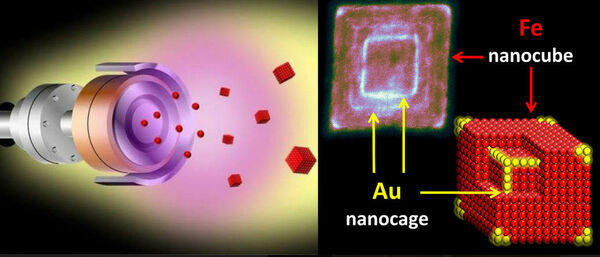
Gold for iron nanocubes
"A recent study revealed that by decorating iron nanocubes with gold the functionality of nanoparticles can be increased. One of the major challenges in nanotechnology is the precise control of shape, size and elemental composition of every single nanoparticle. Physical methods are able to produce homogeneous nanoparticles free of surface contamination. However, they offer limited opportunity to control the shape and specific composition of the nanoobjects when they are being built up. A recent collaboration between the University of Helsinki and the Okinawa Institute of Science and Technology (OIST) Graduate University revealed that hybrid Au/Fe nanoparticles can grow in an unprecedentedly complex structure with a single-step fabrication method. Using a computational modelling framework, the groups of Professor Flyura Djurabekova at the University of Helsinki and Prof. Sowwan at OIST succeeded in deciphering the growth mechanism by a detailed multistage model." [...]
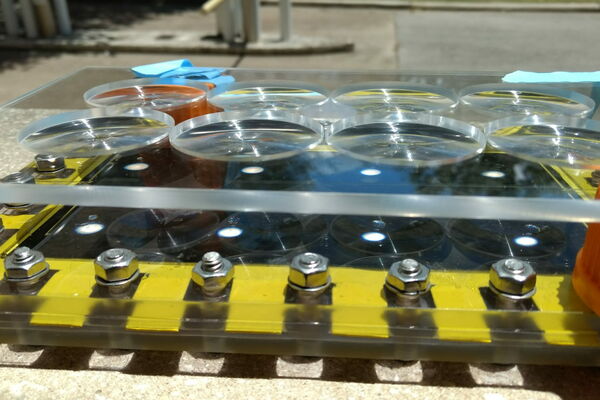
‘Hot spots’ increase efficiency of solar desalination
"Rice University engineers boost output of solar desalination system by 50% Rice University’s solar-powered approach for purifying salt water with sunlight and nanoparticles is even more efficient than its creators first believed. Researchers in Rice’s Laboratory for Nanophotonics (LANP) this week showed they could boost the efficiency of their solar-powered desalination system by more than 50% simply by adding inexpensive plastic lenses to concentrate sunlight into “hot spots.” The results are available online in the Proceedings of the National Academy of Sciences. “The typical way to boost performance in solar-driven systems is to add solar concentrators and bring in more light,” said Pratiksha Dongare, a graduate student in applied physics at Rice’s Brown School of Engineering and co-lead author of the paper. “The big difference here is that we’re using the same amount of light. We’ve shown it’s possible to inexpensively redistribute that power and dramatically increase the rate of purified water production.” In conventional membrane distillation, hot, salty water is flowed across one side of a sheetlike membrane while cool, filtered water flows across the other. The temperature difference creates a difference in vapor pressure that drives water vapor from the heated side through the membrane toward the cooler, lower-pressure side." [...]
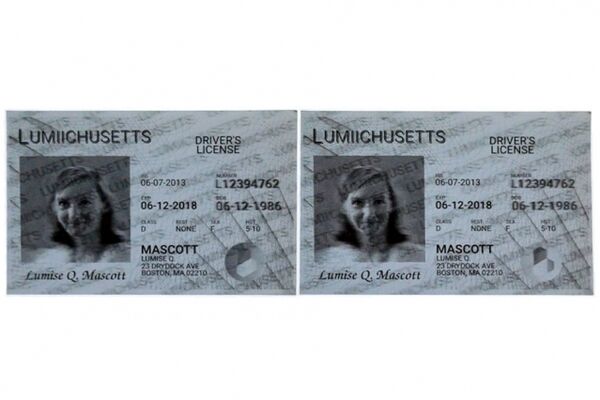
Creating 3-D images, with regular ink
"MIT startup Lumii helps manufacturers replicate the visual effects of holograms on their printed materials. This month, 5,000 distinctive cans of Fuzzy Logic beer will appear on local shelves as part of Massachusetts-based Portico Brewing’s attempt to stand out in the aesthetically competitive world of craft beer. The cans feature eye-catching arrays of holographic triangles that appear three dimensional at certain angles. Curious drinkers might twist the cans and guess how Portico achieved the varying, almost shining appearance. Were special lenses or foils used? Are the optical effects the result of an expensive, holographic film?" [...]

A sound idea: a step towards quantum computing using vibrations in silicon
"Researchers at the University of Tsukuba investigate a new method for generating coherent signals in silicon chips using laser-induced vibrations which may greatly accelerate the development of new quantum computers with superior performance Tsukuba, Japan – A team at the University of Tsukuba studied a novel process for creating coherent lattice waves inside silicon crystals using ultrashort laser pulses. Using theoretical calculations combined with experimental results that were obtained at the University of Pittsburgh, they were able to show that coherent vibrational signals could be maintained inside the samples. This research may lead to quantum computers based on existing silicon devices that can rapidly perform tasks out of the reach of even the fastest supercomputers now available. From home PCs to business servers, computers are a central part of our everyday life, and their power continues to grow at an astounding rate. However, there are two big problems looming on the horizon for classical computers. The first is a fundamental limit on how many transistors we can pack into a single processor." [...]
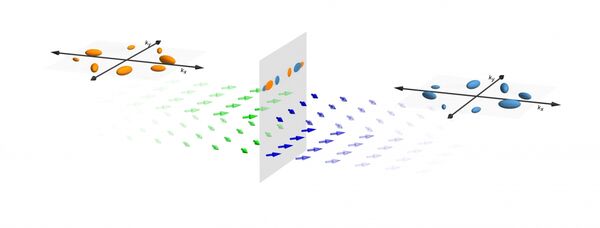
Approaching the magnetic singularity
"MIT researchers discover a material that changes electrical resistance only when a magnetic field is applied at a narrowly confined angle. In many materials, electrical resistance and voltage change in the presence of a magnetic field, usually varying smoothly as the magnetic field rotates. This simple magnetic response underlies many applications including contactless current sensing, motion sensing, and data storage. In a crystal, the way that the charge and spin of its electrons align and interact underlies these effects. Utilizing the nature of the alignment, called symmetry, is a key ingredient in designing a functional material for electronics and the emerging field of spin-based electronics (spintronics). Recently a team of researchers from MIT, the French National Center for Scientific Research (CNRS) and École Normale Supérieure (ENS) de Lyon, University of California at Santa Barbara (UCSB), the Hong Kong University of Science and Technology (HKUST), and NIST Center for Neutron Research, led by Joseph G. Checkelsky, assistant professor of physics at MIT, has discovered a new type of magnetically driven electrical response in a crystal composed of cerium, aluminum, germanium, and silicon." [...]
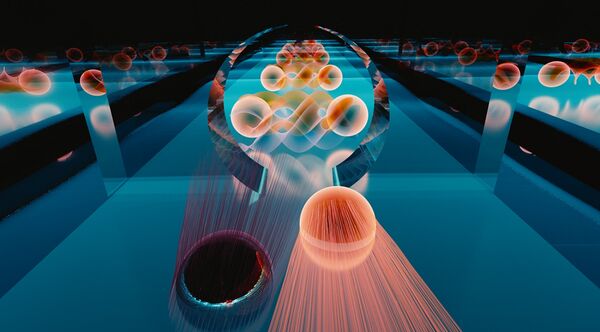
Perfect Quantum Portal Emerges at Exotic Interface
"A junction between an ordinary metal and a special kind of superconductor has provided a robust platform to observe Klein tunneling. Researchers at the University of Maryland have captured the most direct evidence to date of a quantum quirk that allows particles to tunnel through a barrier like it’s not even there. The result, featured on the cover of the June 20, 2019 issue of the journal Nature, may enable engineers to design more uniform components for future quantum computers, quantum sensors and other devices. The new experiment is an observation of Klein tunneling, a special case of a more ordinary quantum phenomenon. In the quantum world, tunneling allows particles like electrons to pass through a barrier even if they don’t have enough energy to actually climb over it. A taller barrier usually makes this harder and lets fewer particles through." [...]
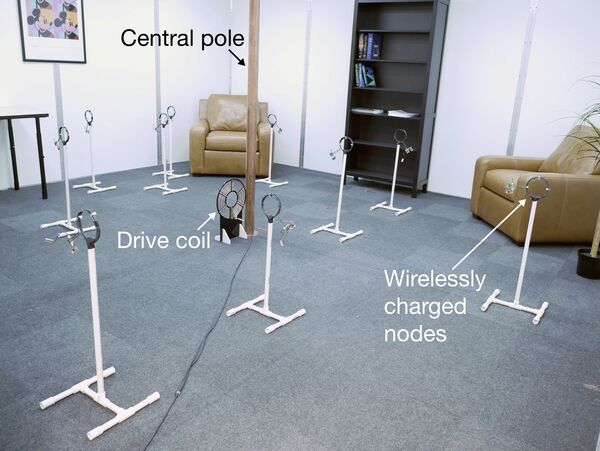
Hidden chargers
"Researchers from the University of Tokyo led by doctoral student Takuya Sasatani, Disney Research and the University of Michigan in the U.S., created and demonstrated a room-sized device which uses magnetic fields to charge compatible devices inside it. “The internet of things is coming,” says Sasatani. “People will soon find their environments populated by small sensors and other devices which need power and communication. We have a safe and elegant solution for this, and it too could help technology become more invisible.” The roomwide wireless power transfer system can simultaneously charge multiple devices – or nodes – within the confines of a room. Metal sheets and electrical components are embedded within a column in the center of the room and the structure of the room itself. As the functional elements of the system are integrated into a room, this approach is most suited for inclusion in new buildings, although the research team also explore ways to retrofit existing environments." [...]
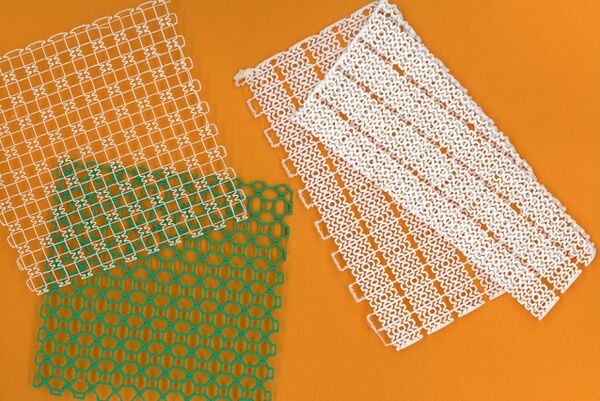
Engineers 3-D print flexible mesh for ankle and knee braces
"Techniques could lead to personalized wearable and implantable devices. Hearing aids, dental crowns, and limb prosthetics are some of the medical devices that can now be digitally designed and customized for individual patients, thanks to 3-D printing. However, these devices are typically designed to replace or support bones and other rigid parts of the body, and are often printed from solid, relatively inflexible material. Now MIT engineers have designed pliable, 3-D-printed mesh materials whose flexibility and toughness they can tune to emulate and support softer tissues such as muscles and tendons. They can tailor the intricate structures in each mesh, and they envision the tough yet stretchy fabric-like material being used as personalized, wearable supports, including ankle or knee braces, and even implantable devices, such as hernia meshes, that better match to a person’s body. As a demonstration, the team printed a flexible mesh for use in an ankle brace." [...]
Modelos 3D
Com a disponibilidade de ferramentas que permitem dar azo a nossa imaginação na criação de peças 3D e espaços como o thingiverse para as publicar, esta rubrica apresenta alguns modelos selecionados que poderão ser úteis.
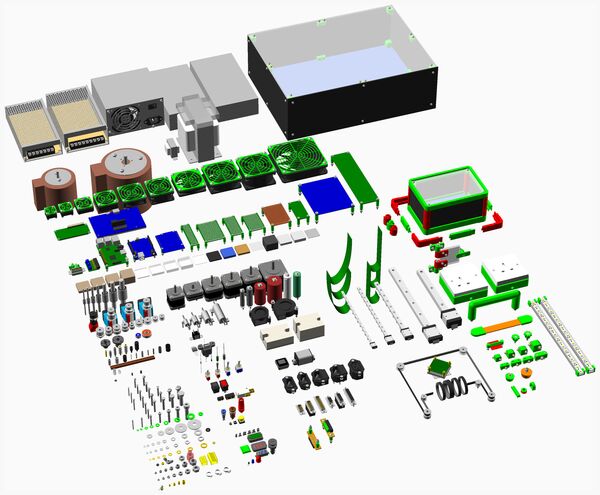
NopSCADlib
"An ever expanding library of parts modelled in OpenSCAD useful for 3D printers and enclosures for electronics, etc. It contains lots of vitamins (the RepRap term for non-printed parts), some general purpose printed parts and some utilities. There are also Python scripts to generate Bills of Materials (BOMs), STL files for all the printed parts, DXF files for CNC routed parts in a project and a manual containing assembly instructions and exploded views by scraping markdown embedded in OpenSCAD comments, see scripts. A simple example project can be found here. " [...]
Documentação
A documentação é parte essencial do processo de aprendizagem e a Internet além de artigos interessantes de explorar também tem alguma documentação em formato PDF interessante de ler. Todos os links aqui apresentados são para conteúdo disponibilizado livremente pelo editor do livro.

HackSpace magazine #20
"Maker perfection is a journey not a destination. We’re all permanent students, and there’s always more to learn, so we’ve pulled together 50 of our top maker tips in this issue to help you be a better maker. Whether you’re a programmer who dabbles in metalwork, a crafter who likes to add electronics to builds or a woodworker who needs some new inspiration, there’s something here to make you a better maker. Find out what it’s like to build a project for the most powerful man in the world, how a wooden bike feels compared with steel, and what to use when you need a leather look for a costume and don’t want any cows to die needlessly. PLUS there’s a heap of tutorials: Tell the time on a laser cut word clock Grow hydroponic veg indoors Build a home-made CNC machine Tap screws in metal Turn an Adafruit CPX into a games console" [...]
Projetos Maker
Diversos Projetos interessantes.
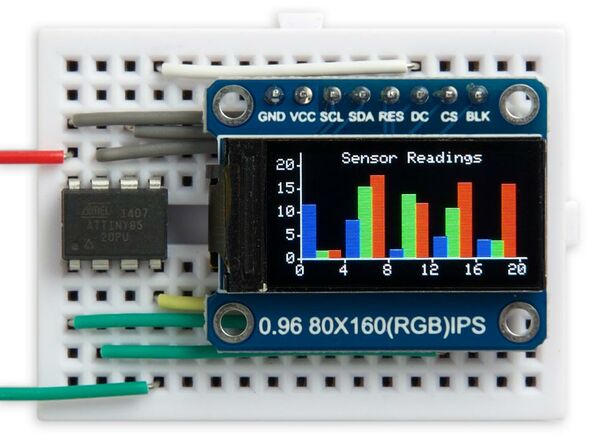
Tiny TFT Graphics Library
"This is a graphics library for the family of small colour TFT displays based on the ST7735 and ST7789 driver chips. These are really nice displays; bright, colourful, available in a variety of useful sizes, and available at low cost from suppliers like Adafruit, AliExpress, or Banggood This library allows you to plot points, draw lines, draw filled rectangles, and plot text with an optional scale factor. I've included a demo histogram-plotting program that adjusts itself to fit each of the displays I've supported. Unlike most other TFT display libraries this one doesn't require a memory buffer, allowing it to be run on any processor down to an ATtiny85. The displays require four pins to drive the display, leaving one pin free on an ATtiny85 to interface to another device, such as a temperature sensor. If you need more pins choose a larger chip, such as the ATtiny84; see Using the library with other AVR chips at the end of the article for information about how to convert the code for different chips." [...]

Bitlash: a programmable command shell for arduino
"Bitlash is an open source interpreted language shell and embedded programming environment for the popular and useful Arduino. The Bitlash interpreter runs entirely on the Arduino and interprets commands that you type in a terminal window or send programmatically to the serial port: bitlash here! v2.0 (c) 2012 Bill Roy -type HELP- 942 bytes free > print "Hello, world! ", millis() Hello, world! 11939 >" [...]
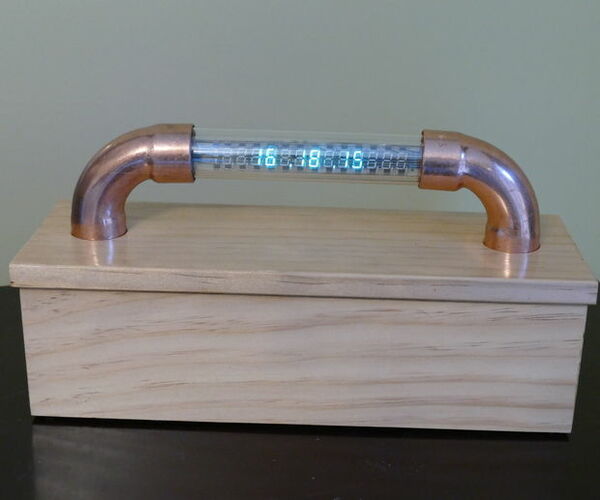
VFD Alarm Clock
"After the successful completion of the XIV Nixie Clock which was Direct/Static Driven, I was keen to start work on a new clock which was based on the Multiplexing(Dynamic) or MUX principle of operation, known also as Muxing. The new clock would be based on the USSR manufactured IV-27V VFD, 13 element, 7 segment tube. This tube requires a 24V common anode DC supply, which dictates what type of IC chip(s) are needed to support the multiplexing operation. To further understand multiplexing the following Wikipedia articles where of great help: https://en.wikipedia.org/wiki/Vacuum_fluorescent_d... https://en.wikipedia.org/wiki/Multiplexed_display To understand how VFD displays work and what is involved in driving the display using either Direct or Multiplexed driver the following article was very useful: https://www.noritake-elec.com/technology/general-t... The clock would have a simple function of displaying Time, Date, Humidity, Temperature, Pressure and an Alarm feature.. Here is a brief summary of how the IV-27M tube works: The tube is evacuated (vacuum)." [...]
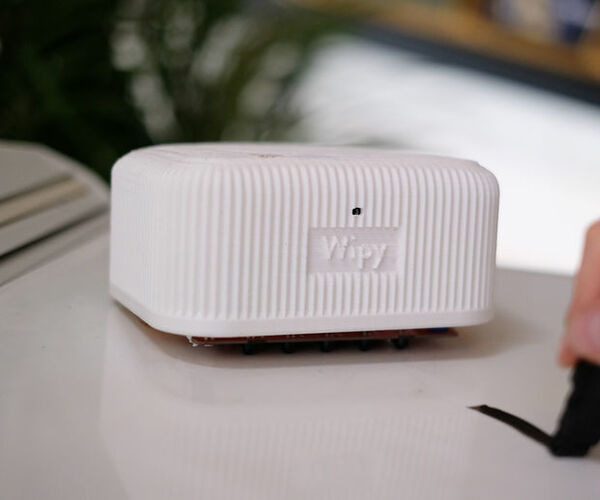
Wipy: the Overly Motivated Whiteboard Cleaner
"Introduction Did you ever get tired of cleaning the whiteboard? Have you ever wondered how much your life would improve if a robot could do this for you? You now have the chance to make this a reality with Wipy: the overly motivated whiteboard cleaner. Wipy will properly clean your embarrassingly bad drawings, and it will even do it with a cute smile. You don't even need to activate it! It will just clean the board when you least expect it... Uhhh...*cough cough*...we, of course, mean: when you need it most!" [...]
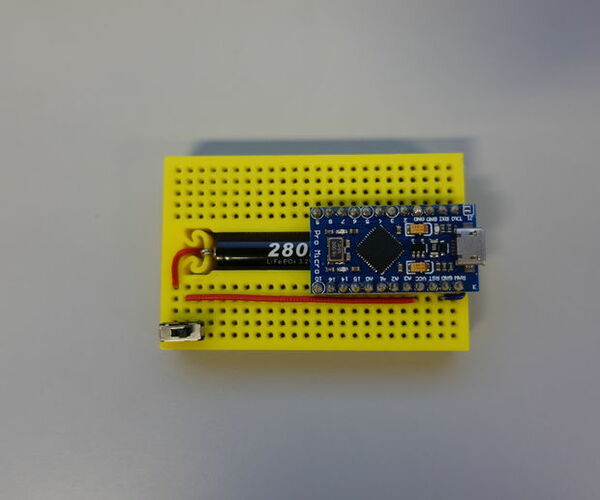
Dev Board Breadboard
"This Instructables show how to create a tailor-made breadboard for dev board. Breadboard (solderless breadboards) is a very import component for prototyping of electronics. It can help you test the circuit before soldering it. Since the connection not require soldering, after the prototyping, all components can be reusable for next projects. There are various size of breadboard, all of them have similar arrangement. A notch in the middle, 2 groups of terminal strips besides the notch and some breadboard have Bus strips on both side." [...]

GOOB - a Smart Alarm Clock
"GOOB is an acronym for "Get Out Of Bed", a well fitting name for my project. I wanted to create a device that can help waking me up in the morning since it isn't the easiest task. The main idea is that the alarm clock doesn't stop the alarm before you get out of bed and stay out of bed for more than some minutes. I also wanted to add some other benefits like a night light with wake up function and a wireless charger. So let's get right to the build ! Supplies:These are the components you would need." [...]
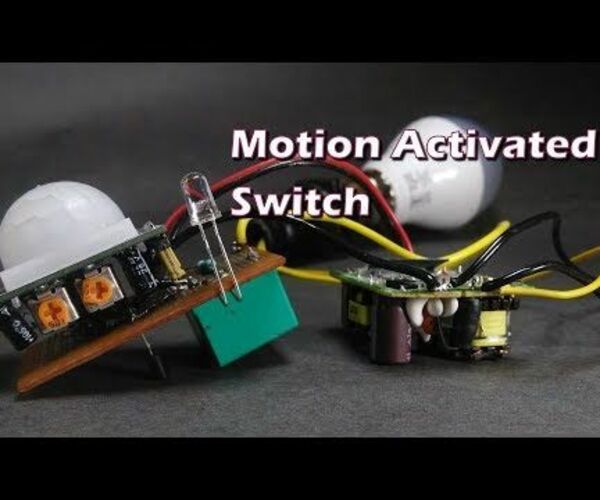
Motion Activated Lamp Switch
"Whenever we leave our desk or room, most of the time we forget to turn off the lights there. This causes loss of electricity and increment in your electricity bill. But what, if the lights get turnoff automatically, after you leave the room. Yes in this tutorial we are going to learn how to make a simple Motion Activated light switch, to save electricity and reduce your electricity bill. " [...]

MicroPython on Cheap $3 ESP8266 WeMos D1 Mini for 2x Temperature Logging, Wifi and Mobile Stats
"With tiny cheap ESP8266 chip / device you can log temperature data outside, in room, greenhouse, lab, cooling room or any other places completely free. This example we will use to log cooling room temperature, inside and outside. Device will be connected to internet via Wifi You will be able to check latest readings on your mobile phone, desktop or any other device with browser Supplies: You need hardware parts to make logging device You can purchase needed devices here (minimal required): WeMos D1 mini micro USB cable 2x DS18B20 waterproof with module board Also nice to have: USB charger to Power your device Waterproof enclosure" [...]
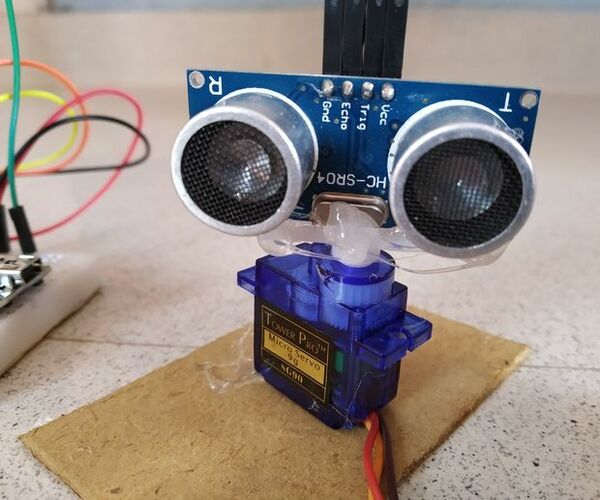
Ultrasonic Radar Using Arduino Nano and Serial Plotter
"In this Instructable we will learn about the basics of a servo library as well as setting up the ultrasonic sensor and use it as a radar. the output of this project will be visible on the serial plotter monitor. Supplies: -Arduino Nano. -Breadboard. -Glue gun. -Jumper wires." [...]
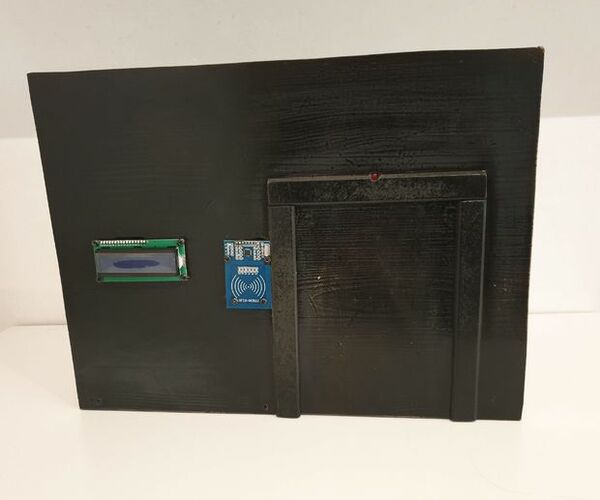
LockCypher
"Hello, my name is Jaron Strypsteen and I study New Media and Communication Technology at Howest in Kortrijk, Belgium. For an assignment for school, we needed to make an project. I choice a smart lock that can be opened with RFID and/or barcode. Below you can read all the steps that were necessary to make this tool. If you want to know more about me and other projects I made, check my portfolio. Before I started designing the website and making my tool, I needed to make sure that I had all the required parts for my device." [...]

Make Your Own Rainbow POV Lamp! From Literally Junk!
"Hello Guys! Welcome back to another instructables where I will show you how to build a completely customizable RGB POV Lamp from junk parts and a handful of electronics. I have 2 videos on the topic. I suggest watching them, they will give you clear guidance to make the project. You can choose between a voice over video or a music montage. Alternatively you can go through the steps below." [...]

Arduino Multi-track MIDI Loop Station
"A loop station, or a looper, is essentially a tool to playback in real-time your instrumental riffs (loops). It's not intended as a recording media, but an instrument to shape the inspiration without distraction (and eventually perform live...). There are plenty of audio recording loop stations out there, both in the form of dedicated hardware (almost every single guitar pedal manufacturer has its own product) or computer software (the excellent Linux Sooper Looper or windows Mobius, to cite the most known). I could only find few projects about DIY non-audio but MIDI loopers, meaning a tool to record MIDI events and play them immediately back in a loop; most of these projects (all of them, I should say) are abandoned or lost ... well, here we are with a complete project for everyone! This Arduino MIDI loop station simply keeps track of incoming MIDI events and play them back. You only have to press the record pedal, create your best riff ever and stop recording by pressing the pedal again." [...]
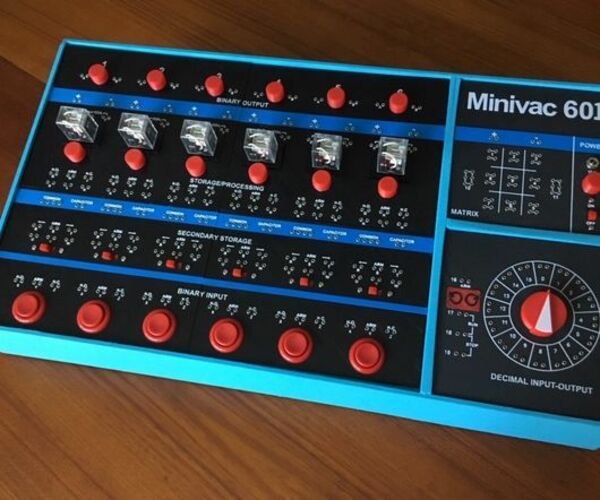
Minivac 601 Replica (Version 0.9)
"Created by information theory pioneer Claude Shannon as an educational toy for teaching digital circuits, the Minivac 601 Digital Computer Kit was billed as an electromechanical digital computer system. Produced by Scientific Development Corporation in the early 60's it sold for $85.00 (about $720 today). Minivac 601 used electromechanical relays as logic switches as well as for very basic storage. Simple DPDT switches and SPDT push buttons made up the binary inputs, with lights to represent the outputs. A large motorized dial allowed the user to enter decimal or hexadecimal numbers, and to output numbers, or to act as a clock signal generator. For more information about the Minivac 601 here are some additional references: Wikipedia Center for Computing History Time-Line Computer Archive The Instructable presented here is for a full size replica of that Minivac 601 from 1961." [...]

Making a DIY Computer Controlled Loom
"Weaving on a loom is fun. I gave my son a simple loom for Christmas, and he wove an entire scarf on Christmas Day. This got me thinking about building a computer controlled loom, maybe one that could weave any pattern imaginable. I liked the idea of taking software back to its very origins with Jacquard and the original Jacquard Loom. I also new there’d be lots of interesting design challenges. In mid December, TechShop had filed for bankruptcy." [...]
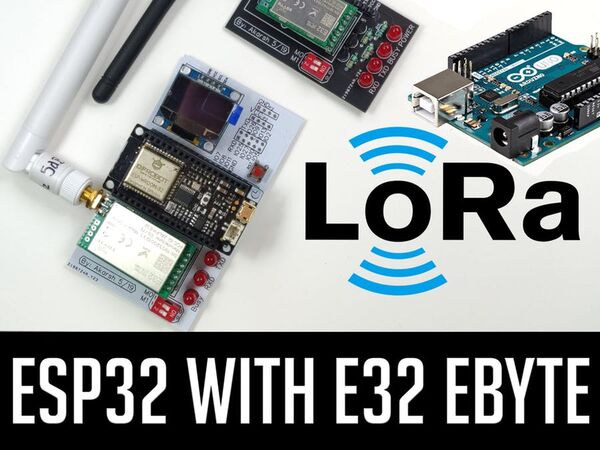
ESP32 with E32-433T LoRa Module Tutorial | LoRa Arduino
"We will be interfacing the high powered E32 1 Watt LoRa module from eByte with an ESP32, the same method is used for an Arduino or ESP8266. This project of mine is interfacing the E32 LoRa module from eByte which is a high power 1-watt transceiver module with an ESP32 using Arduino IDE. We understood the working of the E32 in our last tutorial, this time I have designed a PCB which will connect the ESP32 to an E32. Lastly, we will test our board with another LoRa breakout module and set up a connection. Let us start with the fun now. " [...]
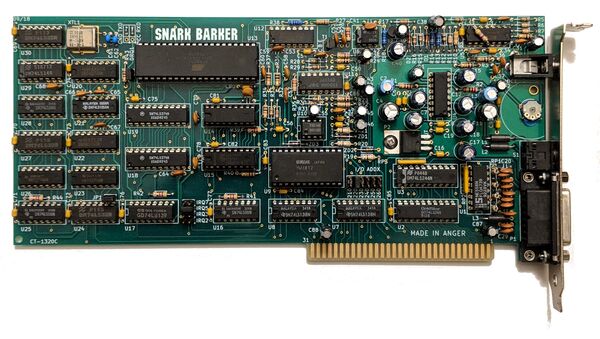
The Snark Barker - a SB 1.0 Clone
"The Snark Barker is a 100% compatible clone of the famed SB 1.0 "Killer Card" sound card from 1989. It implements all the features, including the digital sound playback and recording, Ad Lib compatible synthesis, the joystick/MIDI port, and the CMS chips (which are actually Philips SAA1099 synthesizer devices). All of the components are readily available. In the bill of materials, Mouser part numbers are listed where they are available. Chips not available from Mouser can be purchased from a variety of sources in China. " [...]
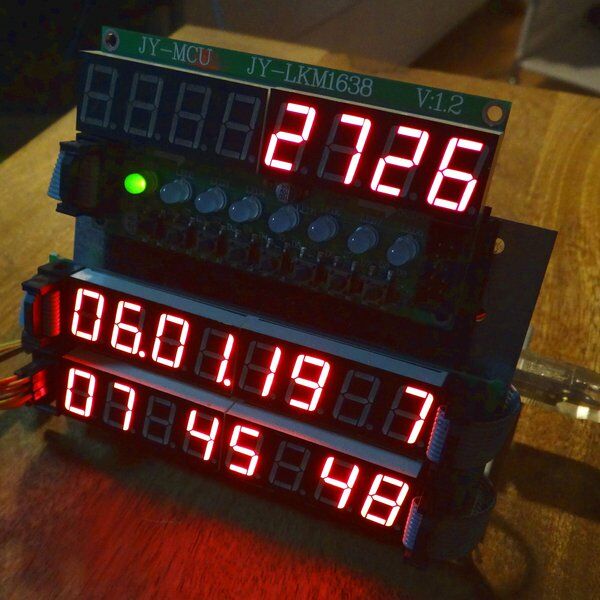
Great-Grandparents' Digital Dream Alarm Clock
"The digital LED clock that your (great-) grandparents would have used without difficulties! DESCRIPTION I remember I always had to set all digital clocks for my grandparents in the 80s - these clocks and watches always required some complicated button juggling! So, here it is: a DIY LED alarm clock that my grandparents would have been able to set and use without my help! An Arduino-based LED clock with 7 individual alarms, highly intuitive user interface, temperature display, and display of days / hours / minutes passed since a special date, e.g., your birthday. An active / ringing alarm can be disabled by making a loud noise, e.g., by clapping your hands. Timer-based PWM sound output for alarm melodies." [...]

bike swarm
"As bikes navigate city streets after dark, they are often equipped with lights. The lights make the bikes visible to cars or other bikers, and the hazards of traffic less dangerous. Imagine that as solitary bikes come together, their lights begin to pulsate at the same cadence. The bikers may not know each other, or may only be passing each other briefly, but for the moments they are together, their lights synchronize. The effect is a visually united presence, as groups of bikes illuminate themselves with a gently pulsing, collective light source. " [...]
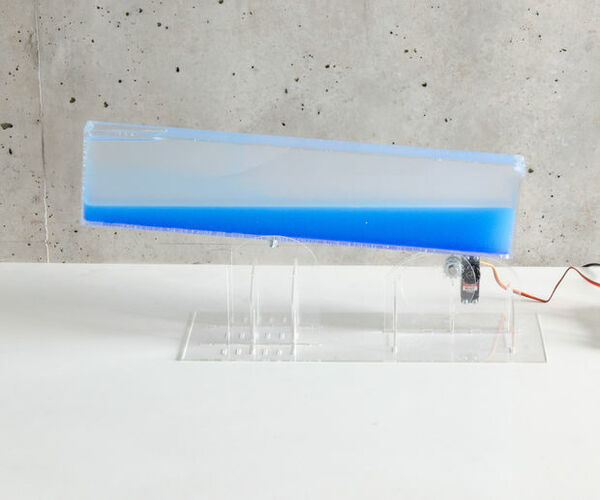
Ultra Realistic Surfing Simulator
"Do you feel a sudden urge of going surfing, but there is no large body of water nearby? Are you scared of deep and turbulent waters? Or are you just to lazy to go outside? Then the Ultra Realistic Surfing Simulator is the perfect solution for you! It allows for a close to reality surfing experience from any place imaginable. As a two part system, motion is sensed by a board and translated into wave motions of an ocean diorama." [...]

Mini Bartop Arcade
"This time, I’d like to show you my old times arcade version using Raspberry Pi Zero, based on Picade Desktop Retro Arcade Machini, as seen in this site: https://howchoo.com/g/mji2odbmytj/picade-review-ra... The goal of this project is to build a retro vídeo game as a gift to my brother that was portable, easy to use, beautiful and very funny. Supplies: Raspberry Pi Zero W. It is highly recommended to use the Raspberry Pi Zero W, since this device connects to the Internet over Wi-Fi. Joystick and buttons. It is not necessary the zero delay board, since in this project the joystick and buttons will be conected directly to the Raspberry Pi Zero W GPIO. 12V x 5A switched power supply." [...]
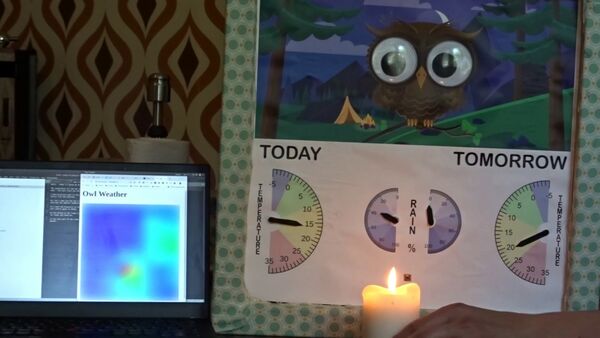
OWL Barometer
"This was a bit of a fun project – I’ve seen on the movies (or maybe Scooby Doo) pictures where the eyes follow you and wanted something similar in my house. Also, from a practical standpoint, I often get caught out without an umbrella in rainy England so I wanted something that would tell me the chances of rain before I left the house.What I came up with was the project that you see in the video above. As with all the devices in my house, I relied on the ESP8266 microcontroller – it’s consistently proven to be stable (I now have 8 of them doing various duties within the house 24/7) and is really simple to program for. The person sensing is done by an Adafruit AMG8833 sensor – easily the most impressive I2C device I’ve seen to date. This provides an 8×8 thermal image that the ESP8266 uses to determine the position of the eye servo. The weather updates are provided by the DarkSky API – I used to use Weather Underground but they’ve closed their service to enthusiasts." [...]
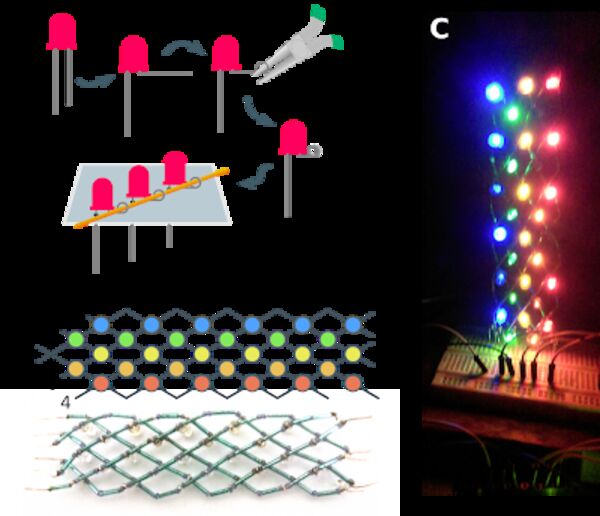
LED multiplexing layouts for hand-crafting
"Have you ever wanted to build a LED matrix display using hand-crafting methods, such as sewing, weaving, or papercraft? Designing and fabricating complex LED projects by hand, while making use of limited input-output (i/o) pins on microcontrollers/Arduino, is challenging. Previous posts have covered how to organize LED matrix displays using "Charlieplexing", which simplifies printed circuit board (PCB) assembly and makes efficient use of i/o pins. But, what if we don't want to go through the hassle of ordering a custom PCB, or what if we want to work with individual LEDs in a craft project? Cost is also a factor: a cardstock "papercraft" display could be built from a cheap Arduino-compatible board and bulk LEDs for under $5 on Ebay, far cheaper than even the cheapest LED scrolling marquees. For a brief review, LED multiplexing involves attaching multiple LEDs sharing a common anode (+ side) or cathode (- side) arrangement." [...]
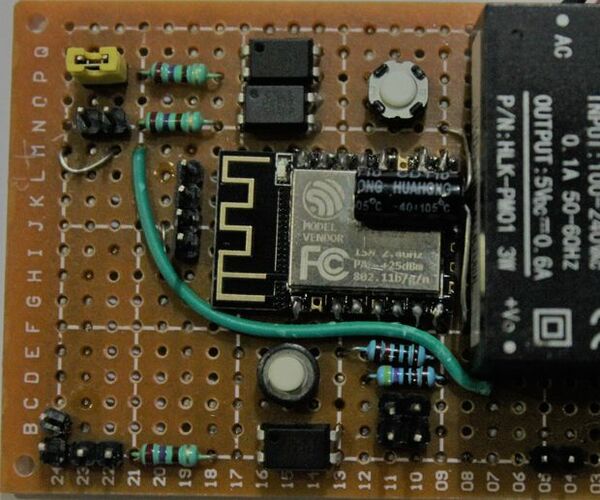
Smart Switch With Motin Deetection
"Smart Switch using ESP12F Module for 2 Relay control + Motion deetection using PIR sensor. Motion deetection is selectable. if its enabled then Relay 2 will operate based on PIR sensor. PIR sensor enable is possible using MQTT message. System Overview :- Raspberry PI act as MQTT broker & it connects with Local wireless network using Router. ESP running with MQTT PUBSUB library and connect with same locak wire less network and subscribed to three topics for Relay 01 for Relay 02 for enable or disable motion sensor functionaliity." [...]

Cyclone(Arduino LED Game)
"In this tutorial, I will teach you how to create an LED game with very little code or experience! I had this idea for a while and finally got around to creating it. It's a fun game that reminds us all of the arcade games. There are other tutorials that I will link for further references. This can be made within an hour of hard work and is worth the effort :) Supplies: WS2812B LEDS x24 Arduino Nano Momentary push button" [...]
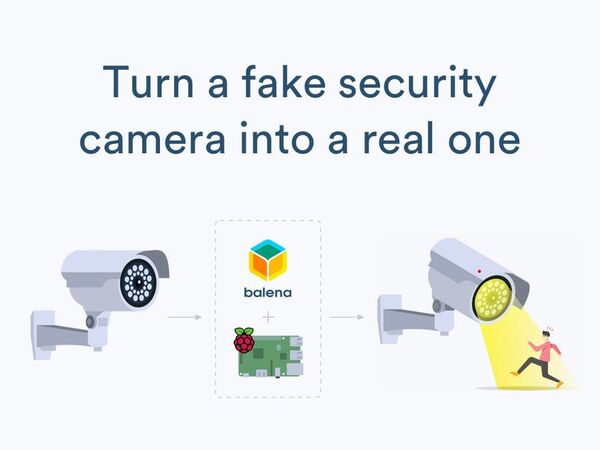
Turn a Fake CCTV Into a Real One with Raspberry Pi & WebRTC
"In this project, we will turn a fake security camera into a real working one with the use of a Raspberry Pi, WebRTC and balena. A few weeks ago we released a project called balena Cam where @mbalamat developed an application running on balenaOS that initiates a WebRTC video streaming connection between the server (a Raspberry Pi, for example) and the client. You can check the full blog post here. Once the main core of the application was stable, we decided to challenge ourselves and take the project down a slightly different route; turning a fake CCTV camera into a real working CCTV camera, where we control the software running on it 🤯. Come with us in this step-by-step tutorial showing how you can build the hardware and software of this fake/real CCTV camera! Let’s go!" [...]

Atari Punk Crab
"A 555 timer Atari punk console for all the bleeps and bloops. Ahhhhh, the good old days, when the bleeps and bloops of video games emitted from your local arcade and Atari reigned supreme. There is nothing like the sound that is heard ringing from Pong, the wakka wakka wakka of Pacman, and the beautiful squiiink of your blaster in Space Invaders. The Atari Punk Crab creates these nostalgic sounds and then some with the squeal and wahwah of pulsating electricity created by two 555 timers. The Atari Punk Console is based on a circuit first published in a Radio Shack booklet in 1980, dubbed the "Sound Synthesizer". It was invented by designer Forrest M. Mims III." [...]
That's all Folks!



